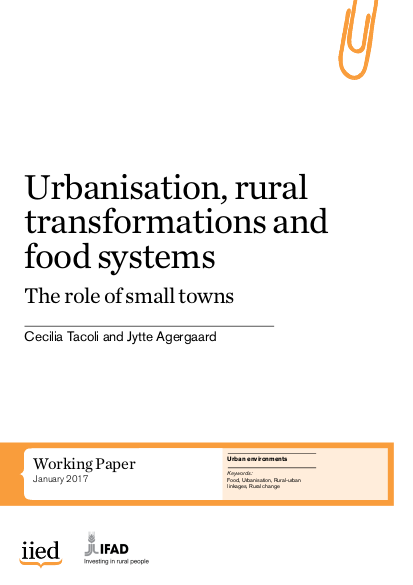
Small towns are an essential but often-neglected element of rural landscapes and food systems. They perform a number of essential functions, from market nodes to providers of services and goods and non-farm employment to their own population as well as that of the wider surrounding region. In demographic terms, they represent about half of the world’s urban population, and are projected to absorb much of its growth in the next decades. But the multiple and complex interconnections between rural and urban spaces, people and enterprises – and how these affect poverty and food insecurity – remain overlooked. Drawing on lessons from a set of case studies from Tanzania and other examples, this paper aims to contribute to this debate by uniting a food systems approach with an explicit focus on small towns and large villages that play a key role in food systems.
Links
Resource collections
- UN Habitat - Urban Response Collection
- Urban Response - Urban Crisis Preparedness and Risk Reduction
- Urban Response Collection - Community Engagement and Social Cohesion
- Urban Response Collection - Economic Recovery
- Urban Response Collection - Environment and Climate Change
- Urban Response Collection - Housing, Land and Property
- Urban Response Collection - Urban Crisis Response, Recovery and Reconstruction
- Urban Response Collection - Urban Resilience
